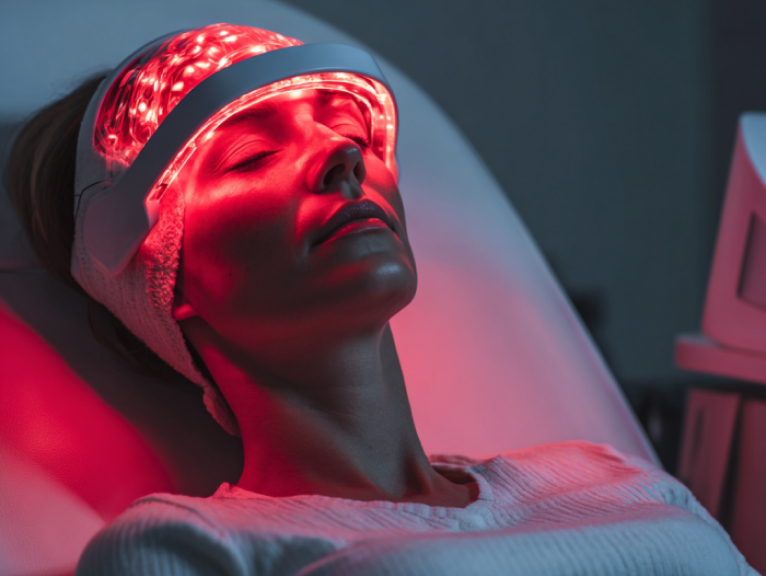
20 Years of Producing the Highest Quality, Most Reliable, and Effective LED mask.
Discover how red light therapy offers new hope for brain cancer patients. Learn about FDA-cleared treatments, clinical trials, and safety benefits for glioma care.

When Jessica was diagnosed with glioblastoma at age 45, her world turned upside down. Like many brain cancer patients, she faced limited treatment options and a challenging prognosis. But emerging research in red light therapy is offering new hope for patients like Jessica – and the science behind it might surprise you.
Brain cancer, especially aggressive types like glioma, presents unique challenges that other cancers don't. The blood-brain barrier makes it incredibly difficult for traditional treatments to reach tumor sites effectively. Surgery is often risky due to the delicate nature of brain tissue, and chemotherapy's harsh side effects can be particularly devastating for patients already dealing with neurological symptoms.
That's where red light therapy enters the picture – offering a gentler, more targeted approach that's catching the attention of researchers worldwide.
You might know LED light therapy from those trendy face masks celebrities post on Instagram, but the medical applications go far beyond skincare. The same technology that helps reduce wrinkles and clear acne is now being studied as a potential game-changer for brain cancer treatment.
Here's how it works: Specific wavelengths of red and near-infrared light (typically 660-850nm) can penetrate tissue and stimulate cellular processes. When these photons hit your cells, they're absorbed by mitochondria – your cells' power plants – boosting energy production and triggering healing responses.
The most exciting application is photodynamic therapy, where special drugs called photosensitizers are combined with precise light wavelengths. Here's the brilliant part: these drugs preferentially accumulate in cancer cells. When activated by light, they create reactive oxygen species that selectively destroy tumor tissue while leaving healthy brain cells intact.
Recent studies have shown:
Unlike traditional treatments that affect your entire body, light therapy can be precisely directed to tumor locations. Think of it as a sniper rifle instead of a shotgun approach – more precision, fewer side effects.
Several FDA-cleared devices are being studied for brain cancer applications:
Professional-Grade Systems:
Emerging Home-Use Applications:
Unlike chemotherapy sessions that can last hours and leave you feeling drained, light therapy sessions are typically:
The safety profile of red light therapy is impressive. In thousands of studies across various medical conditions, serious adverse events are extremely rare. For brain cancer applications, the main considerations are:
While high-end medical PDT systems can cost tens of thousands of dollars, the treatment cost per session is often comparable to other cancer therapies. More importantly, supportive home-use devices are becoming increasingly affordable, with prices ranging from $200-$2,000 depending on specifications.
Insurance Coverage: Some insurance plans are beginning to cover light therapy for certain conditions, and clinical trials often provide treatments at no cost to participants.
Multiple studies are underway investigating light therapy for brain cancer:
The field is evolving rapidly with innovations like:
Red light therapy isn't a magic cure, but it represents something valuable in cancer care: a gentler, more targeted treatment option that works with your body's natural healing processes. For brain cancer patients who often face harsh treatment protocols with significant side effects, this emerging field offers the possibility of adding effective therapy without subtracting quality of life.
Key Takeaways:
The journey with brain cancer is undeniably challenging, but advances in light therapy are providing new reasons for optimism. As research continues and technology improves, we're likely to see even more innovative applications that could transform brain cancer care.
Always consult with your healthcare provider before starting any new treatment. This article is for informational purposes and should not replace professional medical advice.
About LED Therapy: At LED Mask, we're committed to making advanced light therapy accessible and understandable. While our expertise is primarily in skincare applications, we believe in the broader potential of LED technology to improve lives. For medical applications, always work with qualified healthcare providers.
